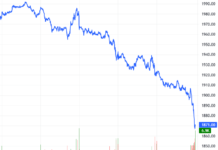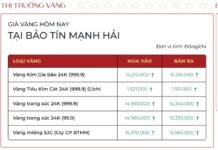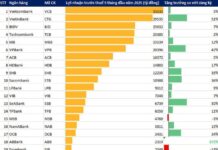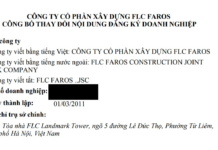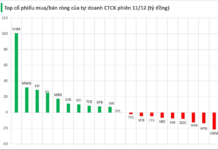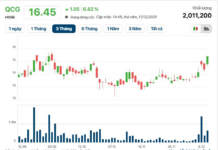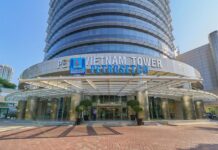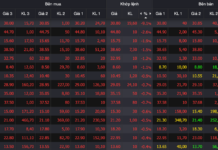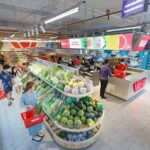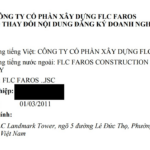
According to a new report by global real estate consultancy Jones Lang LaSalle (JLL) Vietnam titled “From Vision to Action: Accelerating Vietnam’s Industrial Green Transformation,” the drivers of industrial market development, demographic advantages, and green initiatives will act as catalysts for the green transition of this sector.
From 2010 to 2023, foreign direct investment (FDI) in Vietnam
achieved a compound annual growth rate (CAGR) of 10%
, surpassing the 7.6% average of ASEAN countries.
The report also forecasts that Vietnam’s exports are expected to attain a CAGR of 6.8% annually between 2024 and 2030, while domestic consumption is also projected to grow by 6.1% during the same period.

Exports are a key driver of Vietnam’s economic development.
These figures not only reflect the strength of Vietnam’s economy but also underscore the role of exports as a primary driver of economic growth.
The e-commerce industry, one of the fastest-growing sectors in the region, has witnessed robust growth with a CAGR of 33.8% from 2019 to 2023, becoming a significant factor in driving the demand for infrastructure such as warehouses and data centers.
One of the main attractions for investing in industrial supply chains and manufacturing in Vietnam is its highly educated workforce.
With 87% of its working-age population holding qualifications, Vietnam ranks second in Southeast Asia for skilled labor.
This competitive advantage is particularly significant as foreign businesses increasingly seek locations with lower costs while maintaining high production quality.
Furthermore, the average wage for workers in Vietnam’s manufacturing sector is only about 34% of that in China, allowing Vietnam to effectively leverage the “China plus one” strategy, which many businesses are adopting to diversify production and supply chain risks.
Vietnam Offers Over 40,500 Hectares of Industrial Land
Currently, Vietnam boasts a total of 40,505 hectares of industrial land
across both the North and South
, providing a substantial land supply to meet future expansion needs for production and supply chains.
Meanwhile, the strong presence of institutional investors in recent years has propelled the Vietnamese industrial and supply chain market to become one of the fastest-growing in the region.
This has not only improved the market’s stability and standardization but also enhanced transparency, a crucial factor in attracting foreign investment.
The built-to-suit warehouse and ready-built factory markets are also undergoing interesting dynamics. While the built-to-suit factory market continues to demonstrate resilient performance amid volatile global economic conditions, the ready-built factory market is stabilizing after a period of robust growth.

Vietnam’s industrial real estate will see new potential assets such as data centers and cold storage. Illustration image.
This is supported by the growth of the manufacturing sector and storage demands from manufacturing industries, as well as increasing domestic consumption.
As the industrial and supply chain sectors continue to evolve, Vietnam is witnessing a growing interest in
new potential assets such as data centers and cold storage.
Data centers are becoming an integral part of the green transformation strategy, as they enable more efficient energy management and reduce environmental impact.
Cold storage, a critical component in the food and pharmaceutical supply chains, is also emerging as a bright spot amid rising demand for temperature-controlled storage and transportation of heat-sensitive products.
“The Vietnamese industrial market is at a pivotal moment where adopting sustainable solutions is not only a mandatory requirement but also a strategic advantage,” said Trang Le, Senior Director of Research and Consulting at JLL Vietnam.
Revolutionizing Rail: A Holiday Boon for Vietnam’s Railways
On the afternoon of September 3, the Danang City Tourism Department announced that the number of visitors arriving by train had reached approximately 10,600, a significant increase of over 42% compared to the same period last year. Notably, there was a substantial rise in the number of passengers traveling by train from neighboring localities.
“Long-Term Investment in Masan Group, SK Group Extends Put Option”
On September 4, 2024, Masan Group (HOSE: MSN) announced that it has agreed with SK Group to extend the put option timeline between the two parties by up to five additional years.
The Battle of Vietnam’s Logistics Giants: Viettel Post, J&T, and Giao Hàng Nhanh – Investing Millions in Technology, But Still Wary of Slip-ups.
In the thriving landscape of e-commerce, the delivery market is bustling like never before. With an ever-increasing number of online transactions, the demand for efficient and reliable delivery services has skyrocketed. As consumers, we now expect seamless and swift deliveries to our doorsteps, and businesses are racing to meet these expectations. This has led to a highly competitive market, with companies striving to offer the fastest, most convenient, and cost-effective delivery options. The game has changed, and the delivery market is now a pivotal player in the success of e-commerce as a whole.

